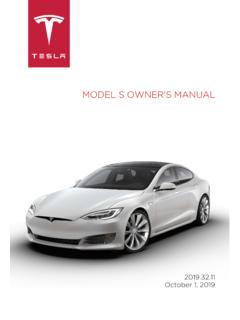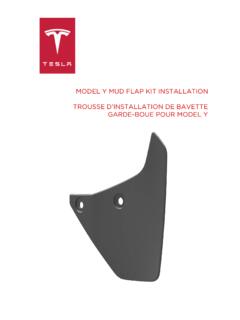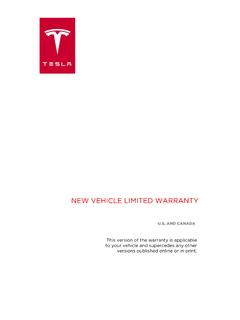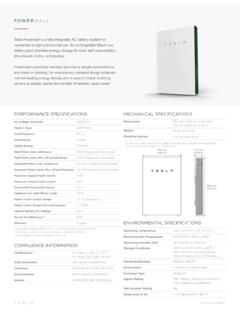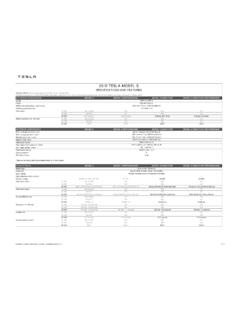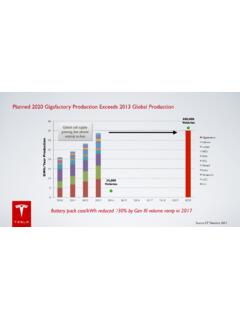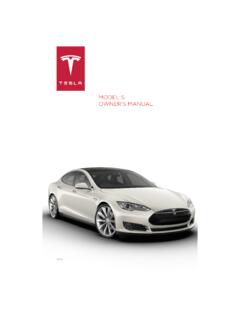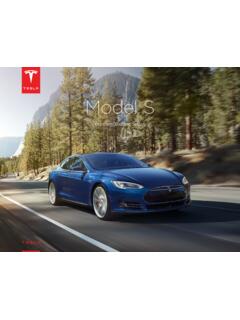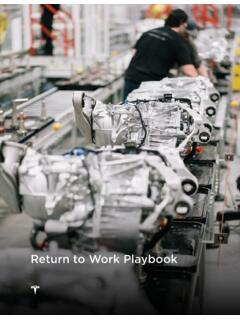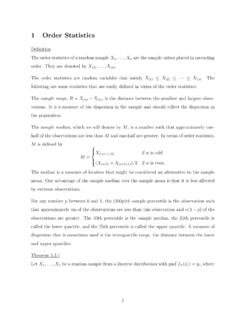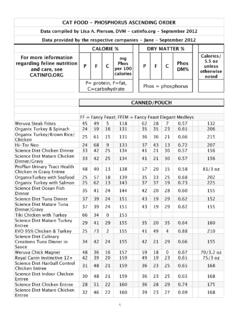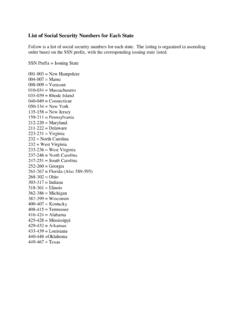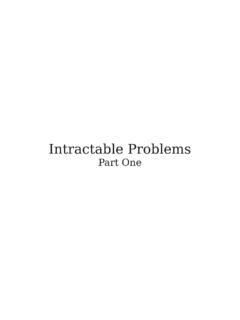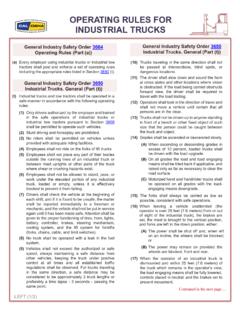Transcription of Hyperloop Alpha - Tesla
1 Page 1 Hyperloop Alpha Intro The first several pages will attempt to describe the design in everyday language, keeping numbers to a minimum and avoiding formulas and jargon. I apologize in advance for my loose use of language and imperfect analogies. The second section is for those with a technical background. There are no doubt errors of various kinds and superior optimizations for elements of the system. Feedback would be most welcome please send to or I would like to thank my excellent compadres at both companies for their help in putting this together.
2 Background When the California high speed rail was approved, I was quite disappointed, as I know many others were too. How could it be that the home of Silicon Valley and JPL doing incredible things like indexing all the world s knowledge and putting rovers on Mars would build a bullet train that is both one of the most expensive per mile and one of the slowest in the world? Note, I am Page 2 hedging my statement slightly by saying one of . The head of the California high speed rail project called me to complain that it wasn t the very slowest bullet train nor the very most expensive per mile.
3 The underlying motive for a statewide mass transit system is a good one. It would be great to have an alternative to flying or driving, but obviously only if it is actually better than flying or driving. The train in question would be both slower, more expensive to operate (if unsubsidized) and less safe by two orders of magnitude than flying, so why would anyone use it? If we are to make a massive investment in a new transportation system, then the return should by rights be equally massive. Compared to the alternatives, it should ideally be: Safer Faster Lower cost More convenient Immune to weather Sustainably self-powering Resistant to Earthquakes Not disruptive to those along the route Is there truly a new mode of transport a fifth mode after planes, trains, cars and boats that meets those criteria and is practical to implement?
4 Many ideas for a system with most of those properties have been proposed and should be acknowledged, reaching as far back as Robert Goddard s to proposals in recent decades by the Rand Corporation and ET3. Unfortunately, none of these have panned out. As things stand today, there is not even a short distance demonstration system operating in test pilot mode anywhere in the world, let alone something that is robust enough for public transit. They all possess, it would seem, one or more fatal flaws that prevent them from coming to fruition. Constraining the Problem The Hyperloop (or something similar) is, in my opinion, the right solution for the specific case of high traffic city pairs that are less than about 1500 km or 900 miles apart.
5 Around that inflection point, I suspect that supersonic air travel ends up being faster and cheaper. With a high enough altitude and the right geometry, the sonic boom noise on the ground would be no louder than current airliners, so that isn t a showstopper. Also, a quiet supersonic plane immediately solves every long distance city pair without the need for a vast new worldwide infrastructure. Page 3 However, for a sub several hundred mile journey, having a supersonic plane is rather pointless, as you would spend almost all your time slowly ascending and descending and very little time at cruise speed.
6 In order to go fast, you need to be at high altitude where the air density drops exponentially, as air at sea level becomes as thick as molasses (not literally, but you get the picture) as you approach sonic velocity. So What is Hyperloop Anyway? Short of figuring out real teleportation, which would of course be awesome (someone please do this), the only option for super fast travel is to build a tube over or under the ground that contains a special environment. This is where things get tricky. At one extreme of the potential solutions is some enlarged version of the old pneumatic tubes used to send mail and packages within and between buildings.
7 You could, in principle, use very powerful fans to push air at high speed through a tube and propel people-sized pods all the way from LA to San Francisco. However, the friction of a 350 mile long column of air moving at anywhere near sonic velocity against the inside of the tube is so stupendously high that this is impossible for all practical purposes. Another extreme is the approach, advocated by Rand and ET3, of drawing a hard or near hard vacuum in the tube and then using an electromagnetic suspension. The problem with this approach is that it is incredibly hard to maintain a near vacuum in a room, let alone 700 miles (round trip) of large tube with dozens of station gateways and thousands of pods entering and exiting every day.
8 All it takes is one leaky seal or a small crack somewhere in the hundreds of miles of tube and the whole system stops working. However, a low pressure (vs. almost no pressure) system set to a level where standard commercial pumps could easily overcome an air leak and the transport pods could handle variable air density would be inherently robust. Unfortunately, this means that there is a non-trivial amount of air in the tube and leads us straight into another problem. Overcoming the Kantrowitz Limit Whenever you have a capsule or pod (I am using the words interchangeably) moving at high speed through a tube containing air, there is a minimum tube to pod area ratio below which you will choke the flow.
9 What this means is that if the walls of the tube and the capsule are too close together, the capsule will behave like a syringe and eventually be forced to push the entire column of air in the system. Not good. Nature s top speed law for a given tube to pod area ratio is known as the Kantrowitz limit. This is highly problematic, as it forces you to either go slowly Page 4 or have a super huge diameter tube. Interestingly, there are usually two solutions to the Kantrowitz limit one where you go slowly and one where you go really, really fast. The latter solution sounds mighty appealing at first, until you realize that going several thousand miles per hour means that you can t tolerate even wide turns without painful g loads.
10 For a journey from San Francisco to LA, you will also experience a rather intense speed up and slow down. And, when you get right down to it, going through transonic buffet in a tube is just fundamentally a dodgy prospect. Both for trip comfort and safety, it would be best to travel at high subsonic speeds for a 350 mile journey. For much longer journeys, such as LA to NY, it would be worth exploring super high speeds and this is probably technically feasible, but, as mentioned above, I believe the economics would probably favor a supersonic plane. The approach that I believe would overcome the Kantrowitz limit is to mount an electric compressor fan on the nose of the pod that actively transfers high pressure air from the front to the rear of the vessel.
